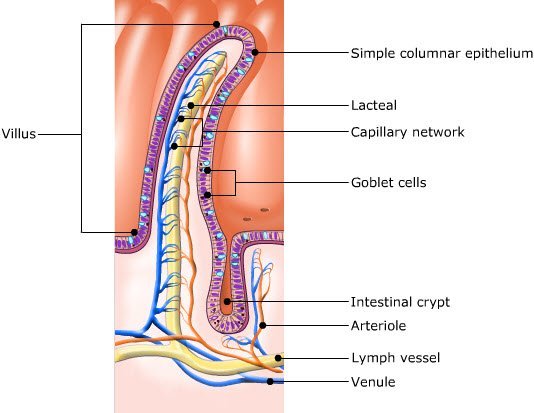Structure of villi in animals
Surface area of the small intestine is enormously increased by large folds of mucosa known as plica circularis to facilitate contact between mucosa and lumen contents.

The mucosal surface area is covered with finger-like epithelial projections called as villi to increase the surface area by about 10 to 14 fold.
The villi are covered with brush like surface membrane known as brush border, composed of microvilli causes further increase the surface area. The gland like structure at the base of the villi is known as crypts of Lieberkuhn.
The villi and crypts are covered with a layer of epithelium.
The epithelial cells covering the villi and the crypts are called as enterocytes.
The enterocytes facing towards the lumen is called apex which are covered with apical membrane. This apical membrane is provided with the microvilli (brush border).
A jelly-like layer of glycoproteins known as glycocalyx covers the microvilli . Digestive enzymes and other proteins are attached to microvilli and project into glycocalyx.
That part of enterocyte facing opposite to lumen is called as the basolateral membrane.
Nutrients absorbed into enterocytes exit the cell through basolateral membrane before entering into blood.